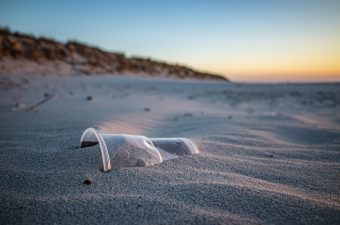Plastic Odyssey is a global initiative dedicated to addressing the issue of plastic pollution in the world’s most affected regions, with a particular focus on combating marine and ocean plastic contamination. The organization’s mission is carried out using a ship that functions as a mobile recycling unit, traveling to countries facing challenges in plastic waste management and utilizing recycling technology to convert plastic waste into useful materials.
Over eight years, this nonprofit organization has built a global network of recycling solutions, helping prevent plastic waste from reaching the oceans.
Now, the organization has set a new goal: restoring biodiversity in protected areas impacted by plastic pollution, beginning with 50 priority sites identified by the United Nations Educational, Scientific, and Cultural Organization (UNESCO). To support this, they have launched a unique fund aimed at raising substantial financial resources over the next few years.
“These areas act as natural traps for plastic, accumulating waste at concentrations up to 400 times greater than the Great Pacific Garbage Patch. Their extreme remoteness has long made cleanup nearly impossible—until now,” the organization announced.

In February of this year, Plastic Odyssey announced the creation of the Plastic Odyssey Fund, a nonprofit public corporation headquartered in San Francisco. One of their key messages reads: “Every minute, 19 tons of plastic waste enter the ocean… We, the citizens of the world, have the means to stop this disaster.”
They also plan to foster international expansion by mobilizing resources and accelerating their impact through engagement with philanthropic organizations, foundations, corporate donors, and governmental actors.
Throughout 2025, Plastic Odyssey will host a series of events across the Americas to deepen engagement within the ocean-focused community and raise awareness about its mission.
This global initiative combines mechanical plastic removal, mobile recycling units, and scientific research to make large-scale cleanup feasible. According to the organization, plastic removal costs have been reduced to just 10 dollars per kilogram.
The organization uses sail-powered cleanup vessels in its missions, designed to operate in fragile ecosystems and prevent further breakdown of microplastics. To support efforts aimed at restoring marine biodiversity, they are launching a six-year campaign to raise 30 dollars million.
Their website, plasticodyssey. org, has published an interactive map, accessible through the “Follow the Expedition” feature. The map displays travel routes, land-based plastic waste, and the regions most affected by plastic pollution.
IN FOCUS:
- When Food Waste Becomes a Resource
- Smart Energy Innovation From the Turbine Tech Team
- A Vision that Transforms the Recycling Industry
Microfactories and Education
After two years of partnership in supporting the expedition, the team from another similar organization, Delfingen, is joining the on-the-ground projects developed by Plastic Odyssey Factories. In the Philippine cities of Cebu and Manila, they launched two microfactories to transform island waste into new value. Each site includes two containers equipped with machines necessary for converting plastic waste into new materials or objects.
During their visit at the end of last year, training sessions for local entrepreneurs were held in the onboard Laboratory. The first training lasted three days and involved ten entrepreneurs from various sectors, while the second session gathered four participants. These shipboard Laboratories proved highly successful, especially among participants who already had a solid background in recycling and were able to expand their knowledge further.
The World’s Most Polluted Beach
Last year, Plastic Odyssey teams cleaned the world’s most polluted beach, located on one of the largest islands—Pitcairn. A 2015 analysis, published two years later, revealed that eight tons of plastic had washed up on its shores—the highest plastic density ever recorded globally. The 38 km² island hosts more than 38 million pieces of plastic along its coastlines, with an estimated daily influx of 3,500 to 13,500 new plastic items.
To address waste removal without damaging the coral reef, they used a raft to transport large bags from the shore to the ship, and parachutes lifted the plastic above the water when waves were too strong. Over seven days, with 25 people, the team removed 6,000 kilograms of plastic waste dating back to 2019, along with another 3,000 kilograms accumulated afterward. All nine tons were subsequently recycled onboard the floating Plastic Odyssey laboratory.
Prepared by Jasna Dragojević
Read the story in the new issue of the Energy portal Magazine SUSTAINABLE MOBILITY
